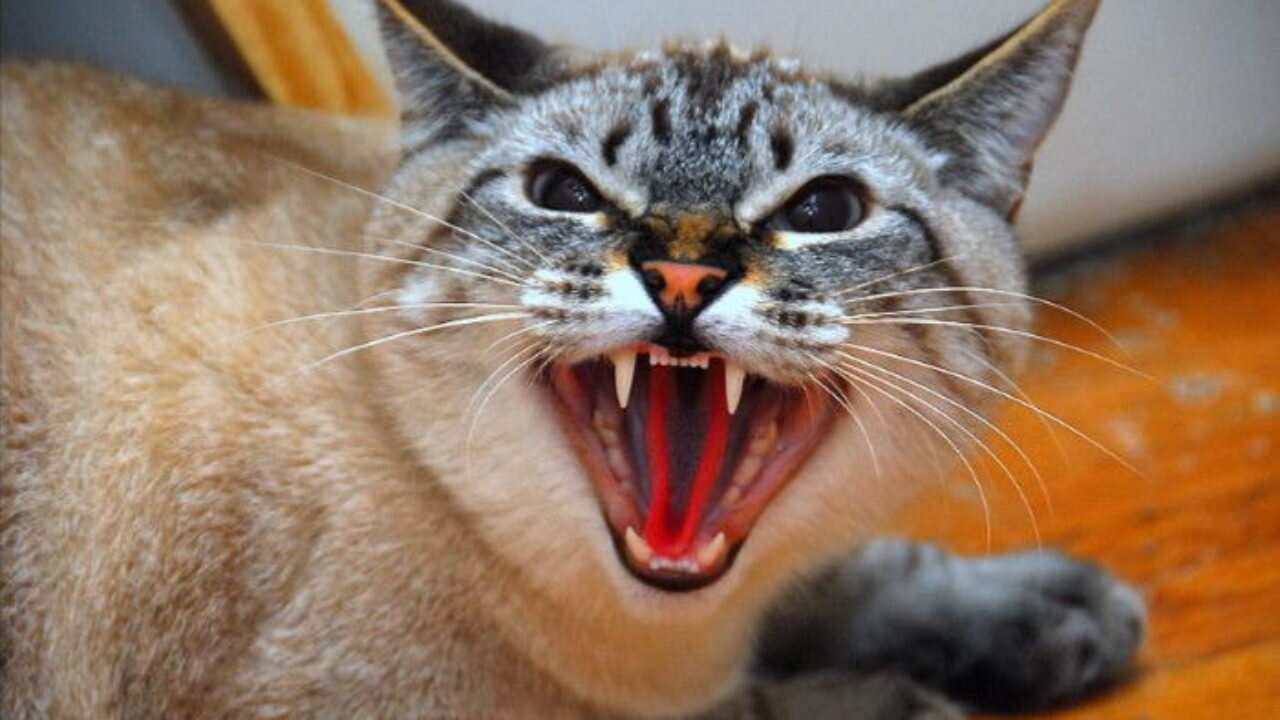Premium Only Content

These Cats Are Very Angry And Violent. - Watch Out For Scratches
Cats can display aggression for a number of reasons. Determining the cause of a cat’s aggressive behavior is important, as different types of aggression may be managed differently. The following are general categories of feline aggression and how they can each be addressed.
Play Aggression
Young cats and kittens that were not raised with littermates, or that lack opportunities to play most commonly show play aggression. Learning appropriate play is an important part of a cat’s socialization, and this normally occurs during time spent with littermates. Cats learn that they are biting or scratching too hard when their littermates stop playing or retaliate. Cats raised alone during their early lives may not learn this important lesson.
Cats that are about to engage in play aggression will often thrash their tails back and forth, have their ears pinned to the tip of their head, and have dilated pupils. They may stalk their target, whether animal or human, and will often pounce from a hiding place as the target passes by.
To intervene in play aggression, first determine if there is a pattern to when and where aggressive behavior occurs. If so, preempt the aggression by distracting the cat with play or denying access to places that encourage the behavior, such as under the bed if the cat hides there before pouncing. A bell on a breakaway collar may be helpful in signaling a cat’s whereabouts prior to and during aggressive behavior.
The use of noise deterrents within a few seconds of aggressive behavior, such as a blast from a can of compressed air or a person hissing, may be helpful in startling a cat and redirecting his attention. The goal is not to scare the cat, but to distract him and refocus his attention. Never physically punish, or even touch a cat, during these times, as this may cause a cat to become fearful of people or may be interpreted as play, which may inadvertently reward the aggressive behavior. Walking away and ignoring a cat engaged in play aggression may teach him that inappropriately aggressive play results in no play at all.
Any objects used to distract a cat from play aggression should be kept at a distance from your hands so that the cat cannot bite or scratch you while venting his aggression on the toy.
Fear Aggression
This type of aggression may be seen when a cat encounters unfamiliar stimuli, such as a new person, animal, or noise, or when a cat is exposed to an experience that he associates with unpleasant events, such as a trip to the veterinarian.
Cats demonstrating fear aggression may flatten their ears against their heads, hiss, bare their teeth, or crouch low to the ground with their tail tucked under their body, and their fur may stand on end.
The best way to deal with fear aggression is to identify and avoid situations that produce a fearful response. If a situation cannot be avoided, then you can attempt gradual desensitization by briefly exposing the cat to the stimulus that causes the fear from a distance, and then rewarding non-aggressive behavior with food and praise.
It is very important not to console an aggressive cat, as this may be perceived as approval of aggression. It is also important not to retreat or show fear, as this may reinforce the behavior if your retreat is what the cat wants. Lack of attention is a better way to handle fear aggression.
Petting-Induced Aggression
For reasons that remain unknown, some cats may suddenly become aggressive when being petted. Possible explanations include overstimulation and an attempt by the cat to control when the petting ends. Handling, bathing, grooming, and nail trimming can also cause this type of aggression. In many cases, the cat will demonstrate dilated pupils, tail lashing, and ears moved backward on the head before becoming aggressive.
To manage a cat with petting-induced aggression, owners should avoid uninvited handling or petting, any type of physical punishment or restraint, and attempts to pick up or interact with the cat while he is eating. Rewarding a cat with a food treat for allowing brief, light stroking without signs of aggression may also be helpful. Over time, owners can gradually increase the duration of stroking, but with any sign of aggression, the owner should stop the petting and begin a cooling down period with no physical contact.
It is particularly important to supervise cats that display this type of aggression when they are in the presence of young children, who often want to pet cats but miss the visual cues of impending aggression. Ideally, owners should prevent physical contact between small children and a cat with a history of petting-induced aggression.
-
 54:12
54:12
Uncommon Sense In Current Times
16 hours ago $7.92 earned"Neither Batman nor the Good Samaritan: A Christian View Of Self-Defense in the Daniel Penny Case"
13.6K3 -
 59:57
59:57
The Tom Renz Show
17 hours ago"Health and Health freedom - next steps"
7.78K3 -
 39:40
39:40
PMG
14 hours ago $7.15 earned"Paulo Figueiredo, Mehek Cooke, Ashley Hayek, Mark Mitchell- The Breanna Morello Show"
35.2K4 -
 3:37:41
3:37:41
Fresh and Fit
7 hours agoGirls React To Lily Philips Sleeping With 100 Guys
125K52 -
 27:00
27:00
Stephen Gardner
9 hours ago🔥McConnell ATTACKS Trump | HUGE Update on MILITARY DRONES mission!!
109K147 -
 8:10:03
8:10:03
Dr Disrespect
18 hours ago🔴LIVE - DR DISRESPECT - WARZONE - HUNTING SEASON
259K77 -
 1:32:28
1:32:28
Fresh and Fit
11 hours agoHow To Wholesale and Fix & Flip Real Estate!
71.5K11 -
 1:30:55
1:30:55
Flyover Conservatives
1 day agoDrones, Darkness, and Divine Intervention: Unpacking Prophecy and Reality - Dr. Troy Spurrill | FOC Show
44.3K2 -
 59:32
59:32
The StoneZONE with Roger Stone
9 hours agoHonoring Great American Patriots for Helping to Save our Country | The StoneZONE w/ Roger Stone
95.4K8 -
 1:09:50
1:09:50
Donald Trump Jr.
14 hours agoHow Sean Parnell Helped Deliver PA, Plus Why Pete Hegseth Must Be Confirmed | TRIGGERED Ep.199
218K93